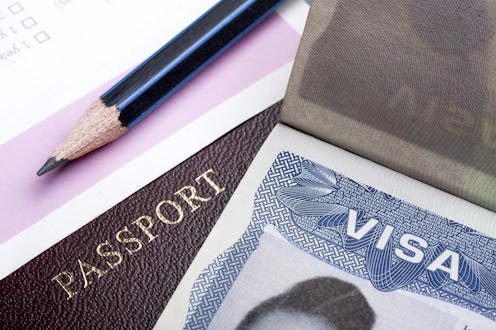Life
Here’s How Long U.S. Citizens Can Stay In Every European Country Without A Visa

So you loved your Euro trip so much you don't ever want to leave, and you find yourself wondering how long you can stay in Europe without a visa if you're a U.S. citizen. Or, you're considering a long distance relationship and want to map out the possibility of love based the possibility of your visits. Either way, you're not alone. The search terms alone for "how to stay in Europe as a U.S. citizen" yields thousands of results. And while there's a lot of information out there about visa rules and restrictions, the verbiage is incredibly complicated and can vary from country to county. And with fines and deportation at stake, it's not something you really want to guess-timate. So, here are the rules:
Schengen Area
Though sometimes we refer to Europe as a singular unit, not every country within the EU operates the same, especially when it comes visas and travel restrictions. Included in the Schengen Area, aka the 26 countries within Europe that do operate as a single unit, are:
- Austria
- Belgium
- Czech Republic
- Denmark
- Estonia
- Finland
- France
- Germany
- Greece
- Hungary
- Iceland
- Italy
- Latvia
- Lithuania
- Luxembourg
- Malta
- Netherlands
- Norway
- Poland
- Portugal
- Slovakia
- Slovenia
- Spain
- Sweden
- Switzerland
You can move freely between any of those countries as if they were one mega unit, as they all share the same border policies and essentially consider you, the American, a traveler of any or all of those countries once you first enter the Schengen Area. If you want to visit any of those countries without a visa, you'll have to leave after 90 days — and that time limit does not restart when you enter a different country, because they are all in the Schengen Area. So, for instance, if you enter Europe via Portugal, then you spend 30 days there before moving on to, say, Spain, you have 60 more days before you need to leave the Schengen Area. Then, you must leave the Schengen Area for 90 days — after that, you can return for another 90 days.
Non-Schengen Area Countries
However, though this is the standard rule, this isn't always the case. If you travel to a non-Schengen member country in Europe, like the United Kingdom, there are different rules: In the U.K., for instance, you can stay for up to 180 without a visa. Conversely, in Belarus, you can only stay for 30 days without a visa.
Again: Though you can only stay in the Schengen Area for 90 days, those days are counted only within a 180 day period. In other words, every six months, your travel allowance is reset, and you get 90 more days. So, theoretically, if you wanted to stay in Europe for more than 90 days, you could pop over to the UK, a non-Schengen country, spend 90 days, and then go right back in, via the Schengen Area.
Schengen Area Countries That Agreements With The U.S.
Now, loopholes: The following countries have something called a "bilateral agreement" with the United States:
- France
- Denmark
- Poland
These agreements mean that U.S. citizens are able to stay an additional 90 days in those countries without a visa. In order to take advantage of this, you have to fly directly from a Schengen Area to one of those countries and stay put for those 90 days. Or, you can stay in one of those countries for 180 days.
During that time you can't work or leave, and according to many message boards for travelers who have utilized this loophole it's technically up to border patrol to decide whether or not to allow you to stay for the additional time, as there have been efforts recently to revoke the rule — so don't make plans without checking with the embassy and the border.
Whatever you do, make sure that you abide by the restrictions diligently, as you will be subject to a fines and deportation. In some cases, you can even be banned from future travel in the Schengen countries, so if the goal is to spend more time in Europe, following the rules is going to make it easier for you to do so.